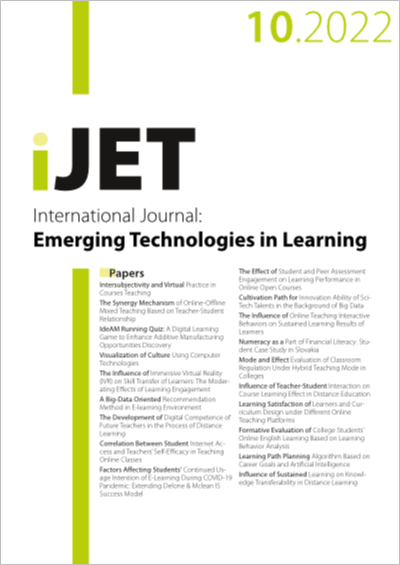Influence of Teacher-Student Interaction on Course Learning Effect in Distance Education
DOI:
https://doi.org/10.3991/ijet.v17i10.30913Keywords:
Distance education, teacher-student interaction, course learning effectAbstract
Comprehensive integration of 5G, artificial intelligence and other technologies into education has fully demonstrated openness and flexibility of distance education, which attracts a large number of learners to study. Good teacher-student interaction in distance teaching plays a significant role in improving the quality of course teaching and teachers’ career development. Based on the Classroom Assessment Scoring System (CLASS) questionnaire, the influence of emotional support, classroom organization and teaching support of teacher-student interaction on course teaching effect in distance education was analyzed, the difference of learning effect of whether students like distance education were analyzed. Results show that the reliability coefficient of the questionnaire is 0.938, and the KMO value is 0.892. The reliability and validity of the questionnaire are very good. Two aspects of teacher-student interaction (classroom organization and teaching support) can improve the learning effect. Whether samples like distance education have a significant effect on learning effect (p<0.05). The learning effect of learners who like distance education is significantly higher than those who do not. Conclusions have important reference value in clarifying the main types and contents of teacher-student interaction, improving students’ subjective feeling ability of curriculum education, promoting learners’ active participation in classroom teaching activities, and maintaining smooth interaction with teachers.
Downloads
Published
How to Cite
Issue
Section
License
Copyright (c) 2022 Yanzhu Zhang

This work is licensed under a Creative Commons Attribution 4.0 International License.


